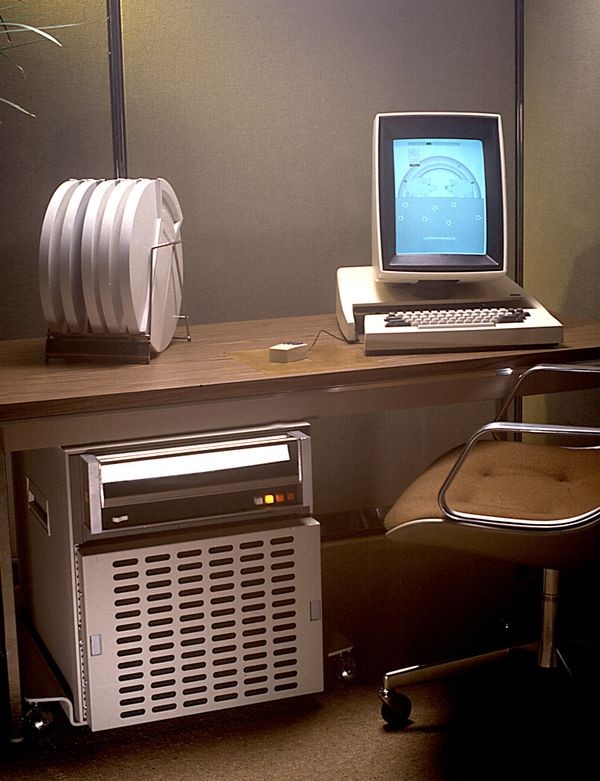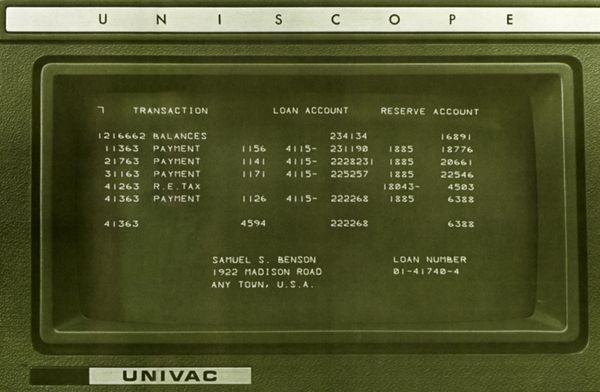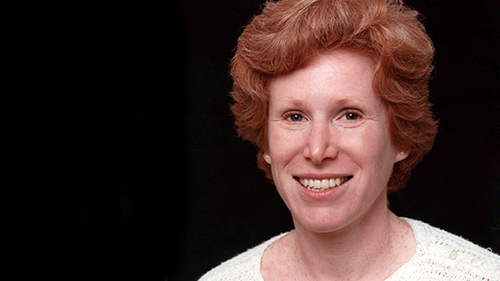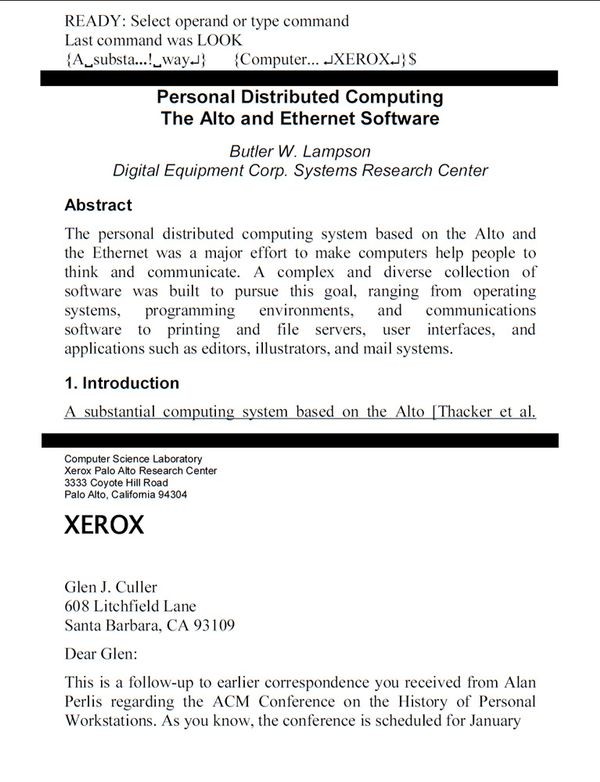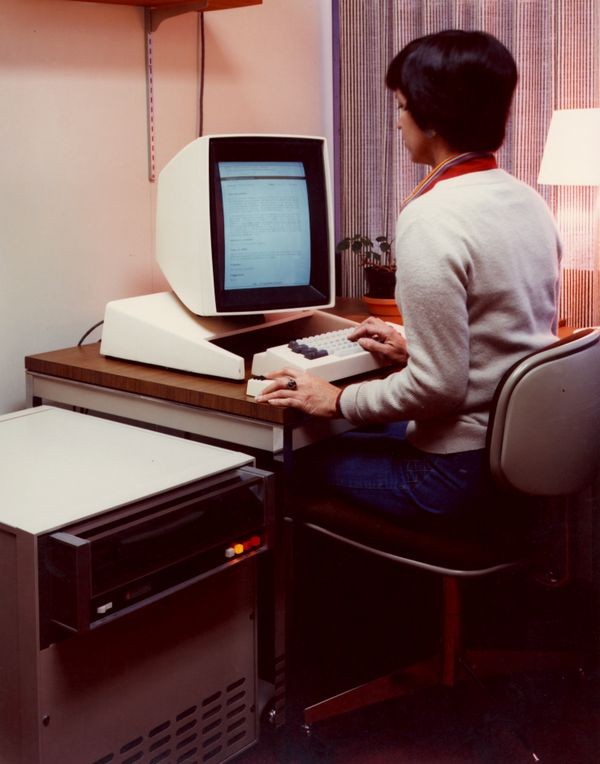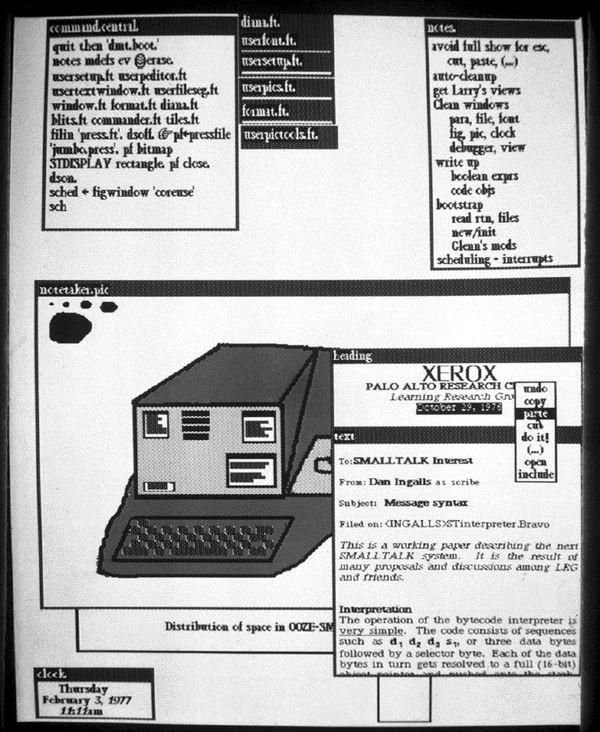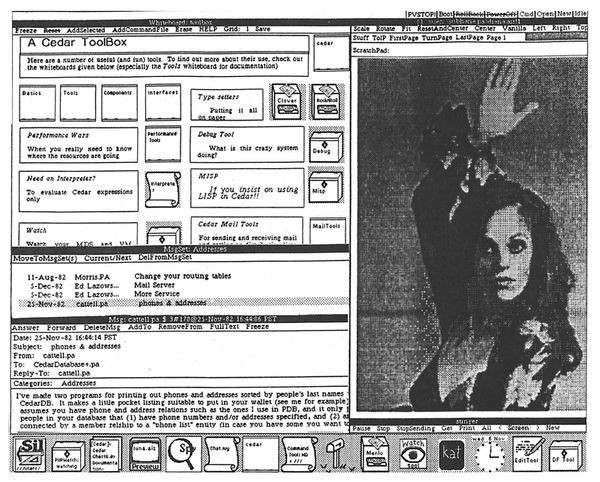Xerox Alto
Alto I CPU with monitor, mouse, keyboard and 5-key chording keyset
The revolutionary Alto would have been an expensive personal computer if put on sale commercially. Lead engineer Charles Thacker noted that the first one cost Xerox $12,000. As a product, the price tag might have been $40,000.
Xerox Alto: Computers for “Regular Folks”
A mouse. Removable data storage. Networking. A visual user interface. Easy-to-use graphics software. “What You See Is What You Get” (WYSIWYG) printing, with printed documents matching what users saw on screen. E-mail. Alto for the first time combined these and other now-familiar elements in one small computer.
Developed by Xerox as a research system, the Alto marked a radical leap in the evolution of how computers interact with people, leading the way to today’s computers.
By making human-computer communications more intuitive and user friendly, Alto and similar systems opened computing to wide use by non-specialists, including children.
People were able to focus on using the computer as a tool to accomplish a task rather than on learning their computer’s technical details.
Children with an Alto computer
Much research by Alan Kay, Adele Goldberg and others in the Learning Research Group focused on making computers kid-friendly. Kay started the group in 1971, influenced by Seymour Papert’s work at MIT on how children learn and interact with computers.
View Artifact Detail"If our theories about the utility of cheap, powerful personal computers are correct, we should be able to demonstrate them convincingly on Alto."
Operating Alto workstation
The Alto computer combined features rare at that time, including page-oriented displays, a mouse, networking and interchangeable magnetic disk storage packs for individual user data.
View Artifact DetailBefore “Point and Click”
Before the Alto, most people communicated with computers using text. No images, no font choices. Input had to be letter-perfect. With punched cards or paper tape, the lag between input and output ranged from minutes to days.
By the late 1960s, some lucky users communicated through interactive video terminals. Yet terminals were mostly text-based. Graphics was too hard for computers—and computer time was considered too valuable to waste on saving people time. Humans were expected to adapt to their machines.
Computers with graphical interfaces changed the equation, communicating on our terms, not theirs.
A Smalltalk-80 graphical user interface (GUI)
Smalltalk promoted an “object-oriented” style of programming. The overlapping windows, with titles in the upper left, remain graphical standards today.
View Artifact DetailTypical video-monitor interface
Most computer terminals in the mainframe era could only display monochrome text in a single size of fixed-width font. No “graphical user interface” was possible!
View Artifact DetailA Visual Approach
To make computer use easy, Xerox PARC (Palo Alto Research Center) combined a graphics-based display and mouse with software that presented a rich interface of moveable windows and icons.
The graphics, and Alto’s point-and-click selection method, enabled new approaches to word processing—Bravo’s WYSIWYG printing, and Gypsy’s “cut-and-paste” editing—that have become standard.
Moreover, a graphics-based interface didn’t demand human perfection, freeing users from cumbersome, error-prone text commands. It also made it easy to combine images with varied text fonts and layouts—all on a 600 by 800 pixel monochrome monitor.
BRAVO text editor screen
This shows BRAVO running on an Alto, with two documents open for editing. BRAVO is widely regarded as the first “What-You-See-Is-What-You-Get” (WYSIWYG) text editor, showing on the screen exactly how the page would appear when printed.
View Artifact DetailAlto computer
This marketing photo shows office word processing using an Alto. Thousands of Altos were built. Many were given away, but none were sold.
View Artifact DetailSmalltalk screenshot
Smalltalk was innovative and influential in at least three ways: as a message-passing, object-oriented programming language; as a graphical user interface; and as a program development environment.
View Artifact DetailCedar program development environment
Cedar, like Smalltalk, was a combination of program development environment and graphical user interface. But Cedar used a strongly typed language (Mesa) instead of dynamic typing, and tiled instead of overlapping windows—two of many “cultural” differences between the projects.
View Artifact DetailAlto Neptune file manager screen
The Alto encouraged experiments with graphical instead of command-line interfaces. Neptune used creative text layout and different mouse buttons to select files and commands, but had no icons or images. The color-coded mouse buttons selected different commands.
View Artifact Detail





